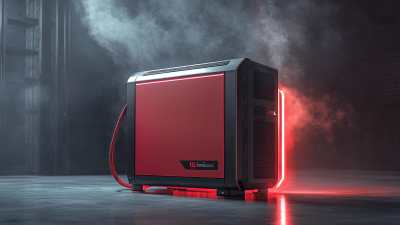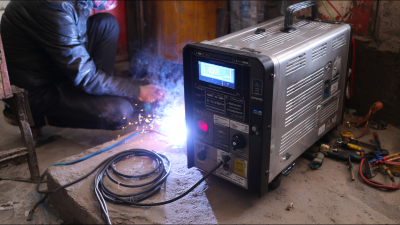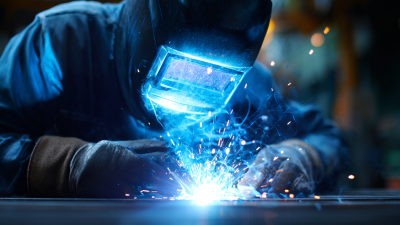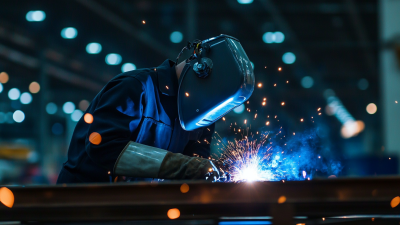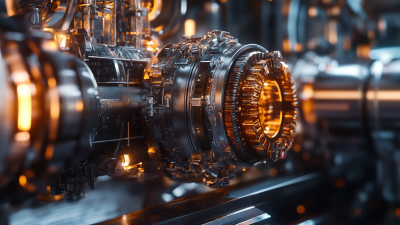In recent years, the adoption of Inverter Welders has seen a significant surge within the welding industry, driven by their unique advantages and enhanced performance capabilities. According to the International Institute of Welding, the global market for inverter technology in welding is projected to grow by over 6.5% annually, reflecting the increasing preference for these advanced machines among both professional welders and hobbyists.
 Inverter Welders are renowned for their lightweight design, portability, and energy efficiency, making them an ideal choice for a variety of welding applications, from automotive repairs to home projects. With technological advancements allowing for greater precision and control, the Inverter Welder is transforming traditional welding approaches, enabling users to achieve superior results while reducing their operational costs. Thus, understanding the myriad benefits of incorporating an Inverter Welder into your welding projects can propel your craftsmanship to new heights and position you well in an evolving market.
Inverter Welders are renowned for their lightweight design, portability, and energy efficiency, making them an ideal choice for a variety of welding applications, from automotive repairs to home projects. With technological advancements allowing for greater precision and control, the Inverter Welder is transforming traditional welding approaches, enabling users to achieve superior results while reducing their operational costs. Thus, understanding the myriad benefits of incorporating an Inverter Welder into your welding projects can propel your craftsmanship to new heights and position you well in an evolving market.
Inverter welders have revolutionized the welding industry by enhancing efficiency and providing a range of benefits for various projects. These advanced machines are designed to adjust voltage and current in real-time, significantly improving arc stability and control. This adaptability not only allows for more precise welding but also reduces the likelihood of defects, leading to higher quality welds. As a result, welders can complete projects faster and with less rework, ultimately saving time and resources.
Moreover, inverter welders are compact and lightweight, making them highly portable. This feature is especially valuable for on-site projects where mobility is crucial. Welders can easily transport these units to various locations without the strain of heavier, traditional equipment. Additionally, inverter technology typically consumes less power, which contributes to lower operating costs. The combination of portability, energy efficiency, and superior performance makes inverter welders an excellent choice for both professionals and hobbyists looking to enhance their welding efficiency and overall project outcomes.
| Feature | Benefit | Impact on Efficiency |
|---|---|---|
| Lightweight and Portable | Easy to transport and use on-site | Increases the range of work locations |
| Adjustable Settings | Customizable welding settings for different materials | Enhances precision and quality of welds |
| Energy Efficiency | Lower power consumption compared to traditional welders | Reduces operating costs |
| Inverter Technology | Provides a stable arc and reduces spatter | Improves weld quality and decreases cleanup time |
| Multi-Process Capability | Can handle various welding techniques (MIG, TIG, Stick) | Provides versatility for different projects |
| User-Friendly Interface | Simple controls that allow for quick setup | Reduces training time for new users |
In recent years, inverter technology has transformed the welding industry, offering key advantages that enhance both performance and productivity. One significant benefit of inverter welders is their lightweight and portable design, making them ideal for onsite jobs. According to a study by the American Welding Society, inverter welders can be up to 80% lighter than conventional transformer models, which allows welders to easily move their equipment without compromising power or efficiency.
Furthermore, inverter welders provide superior arc stability and control, resulting in cleaner welds and less spatter. Research indicates that this technology can improve welding quality by producing a more consistent arc, which is critical for achieving high-strength welds and reducing the likelihood of defects. The versatility of inverter welders also stands out, as they can seamlessly switch between different welding processes such as MIG, TIG, and stick welding, catering to a variety of project requirements. Statistics show that around 60% of professional welders prefer inverter technology for its adaptability and enhanced control, ultimately contributing to better overall project outcomes.

Inverter welders have gained popularity in recent years, largely due to their unique advantages over traditional arc welders. One of the primary benefits of using inverter welders is their compact design and lightweight nature, which significantly enhances portability. While traditional arc welders tend to be bulky and cumbersome, inverter welders can be easily transported to different job sites, making them ideal for construction work and on-the-go projects. This portability does not compromise their performance; in fact, inverter welders often offer greater versatility in terms of welding processes and materials they can handle.
Another crucial difference lies in the energy efficiency of inverter welders compared to their traditional counterparts. Inverter technology allows for more precise control of the welding parameters, leading to reduced energy consumption. This efficiency translates to lower operational costs for users, especially in settings where power consumption is a significant concern. Additionally, inverter welders typically provide smoother arcs and reduced spatter, which not only enhances the quality of the weld but also minimizes post-weld cleanup efforts. As a result, many welders find that shifting to inverter technology improves both the quality and efficiency of their work.
When considering an inverter welder for your projects, it’s essential to evaluate several key factors to ensure you choose the right machine. First and foremost, look for the welder’s amperage range; models typically vary from 20A to 250A. According to a report by the American Welding Society, selecting a welder with a suitable amperage for your materials ensures effective penetration and minimizes defects.
Additionally, consider the inverter's duty cycle, which indicates how long you can weld before needing to allow the machine to cool down. A unit with a duty cycle of 60% at 200A is generally ideal for most moderate welding tasks. It's also crucial to examine the unit's weight and portability, especially if you plan to move it between job sites. Lightweight models can weigh as little as 20 pounds, significantly enhancing mobility.
**Tip:** Always check for user-friendly features such as digital displays and adjustable settings; these can greatly enhance your welding efficiency and accuracy.
Another factor to keep in mind is the inverter’s power source compatibility. Models that operate both on AC and DC give you flexibility and versatility, which is especially important for various welding applications. Look for a welder with an input voltage range that matches your power supply to avoid compatibility issues.
**Tip:** Don't forget to review customer feedback and expert reviews; these insights can often guide you to the most reliable models in the market, ensuring your investment is worthwhile.

When using an inverter welder, maximizing performance is crucial for achieving high-quality welds in your projects. One of the most effective tips is to select the right settings for your specific material and thickness. Inverter welders often come with advanced features like adjustable voltage and amperage settings. Taking the time to familiarize yourself with these options can make a significant difference in your welding results. Experimenting with various settings on scrap materials can help you understand how different adjustments affect penetration and bead appearance.
Another important aspect of maximizing performance is maintaining your inverter welder. Regular cleaning of the electrical components and nozzles will help ensure optimal function. Keep an eye on the cooling system, as overheating can lead to performance issues and damage over time. Additionally, using quality filler materials compatible with your inverter welder will facilitate smoother operation and enhance the overall quality of your welds. By focusing on these tips, you can fully harness the capabilities of your inverter welder, leading to more efficient and effective welding projects.
